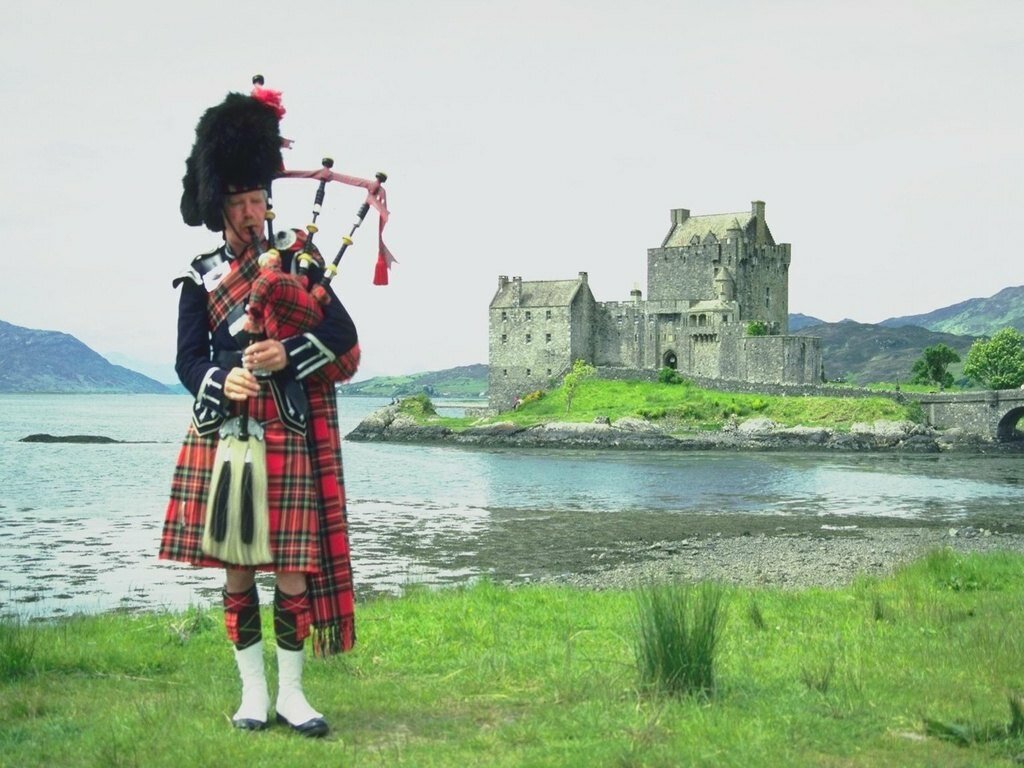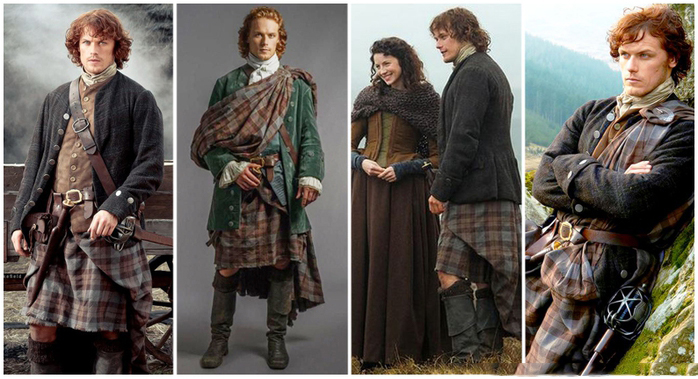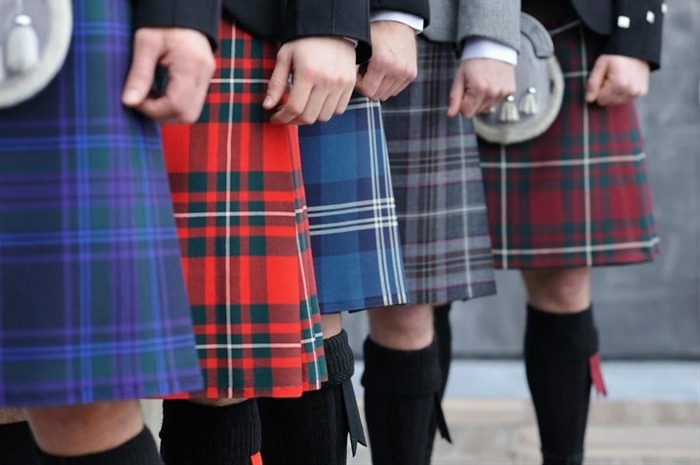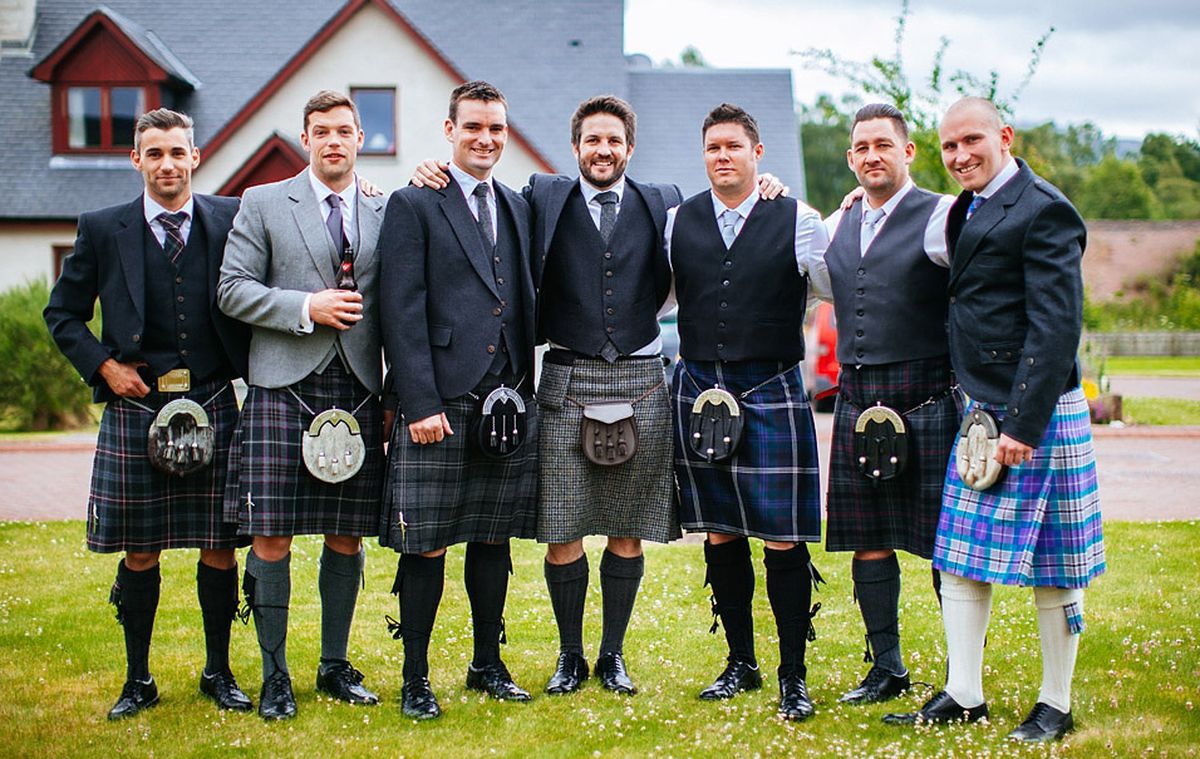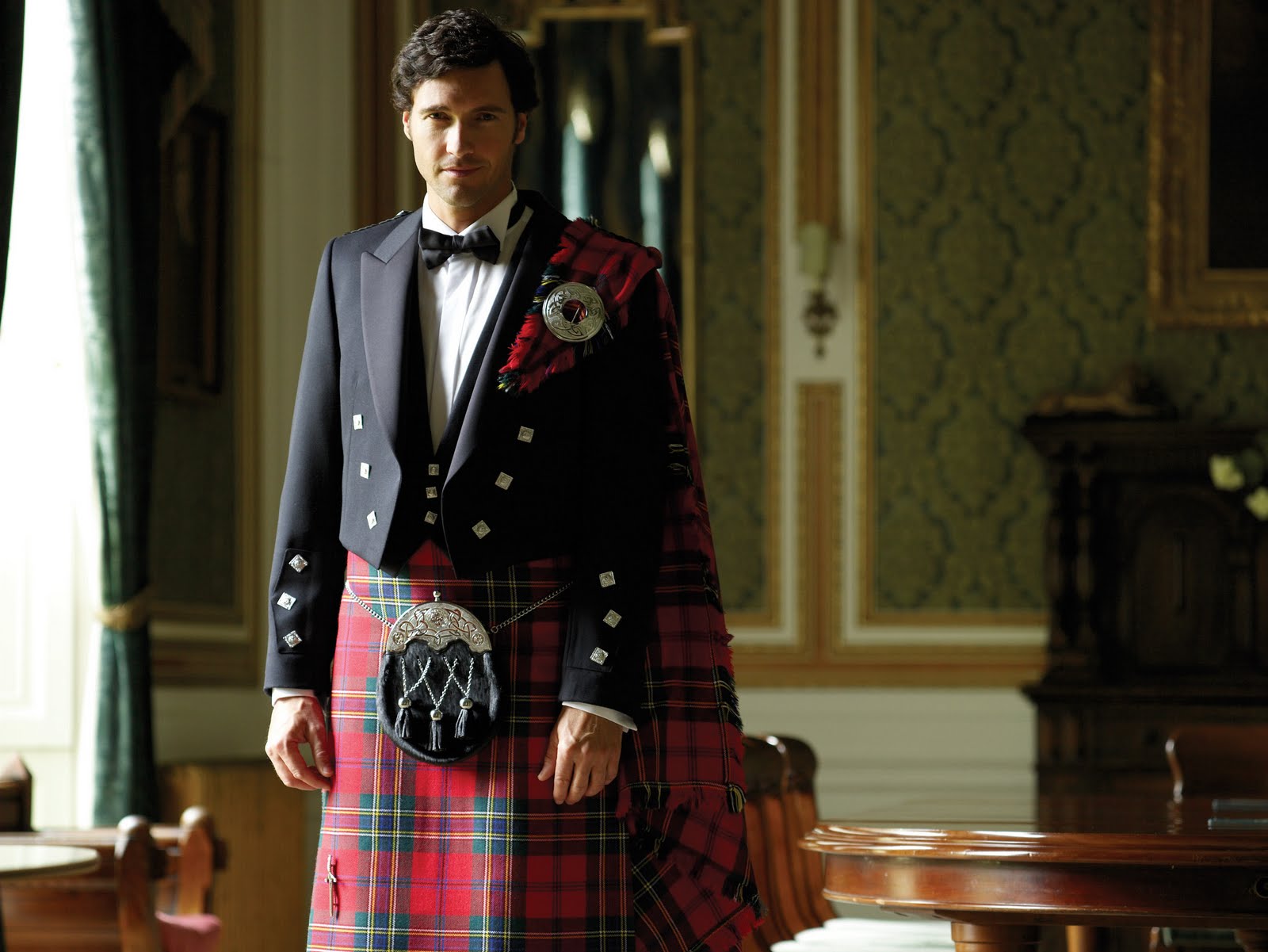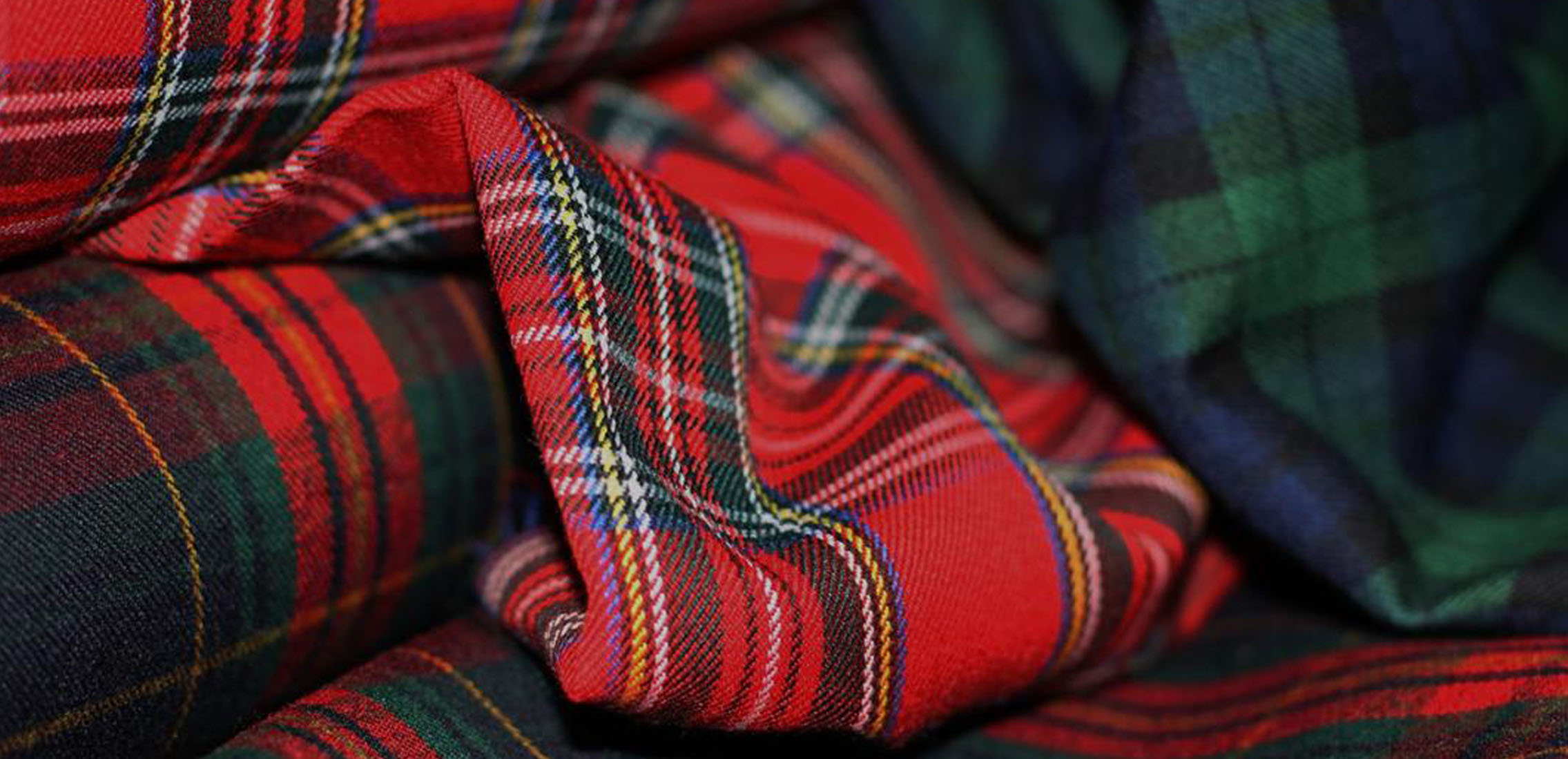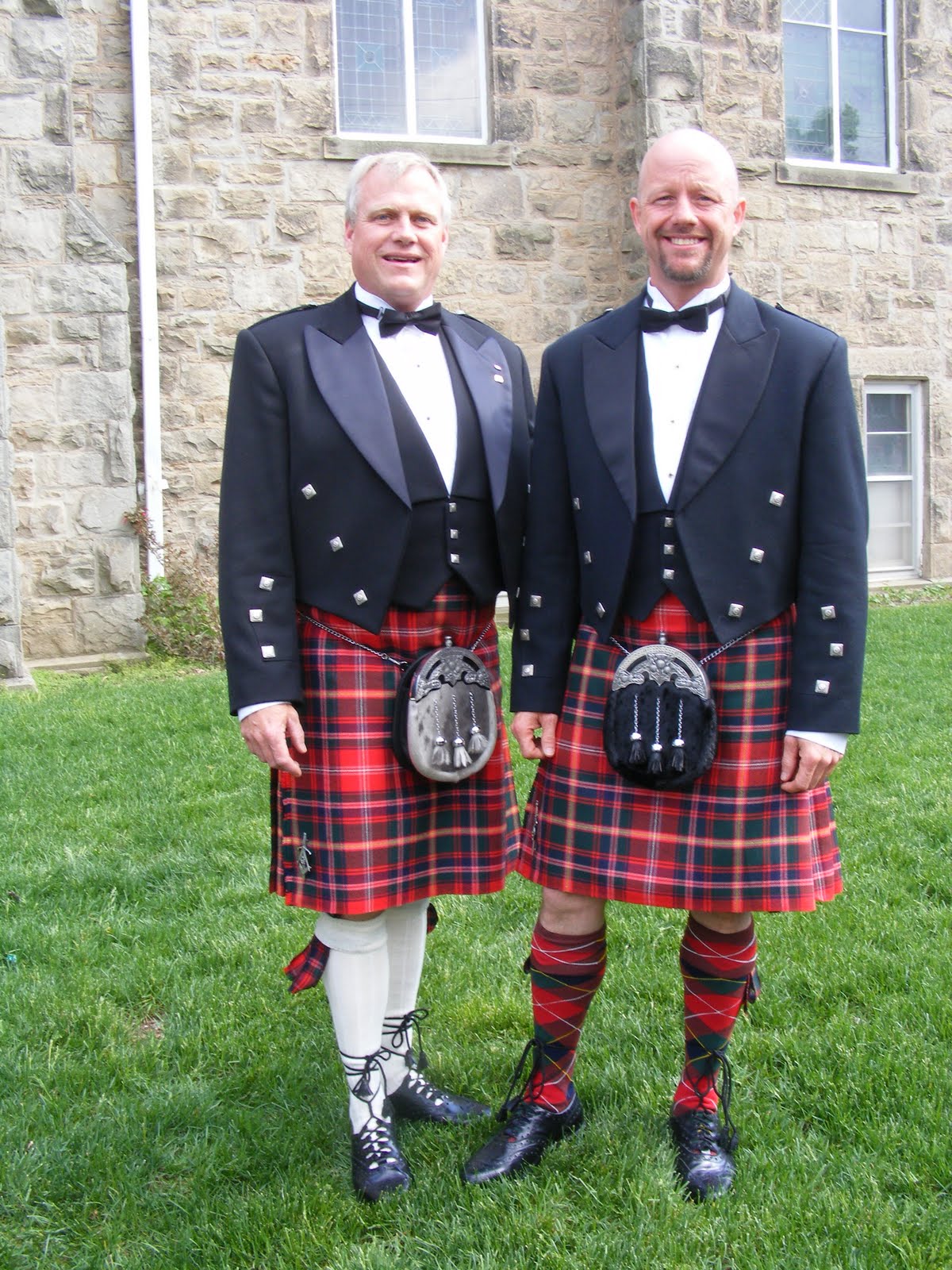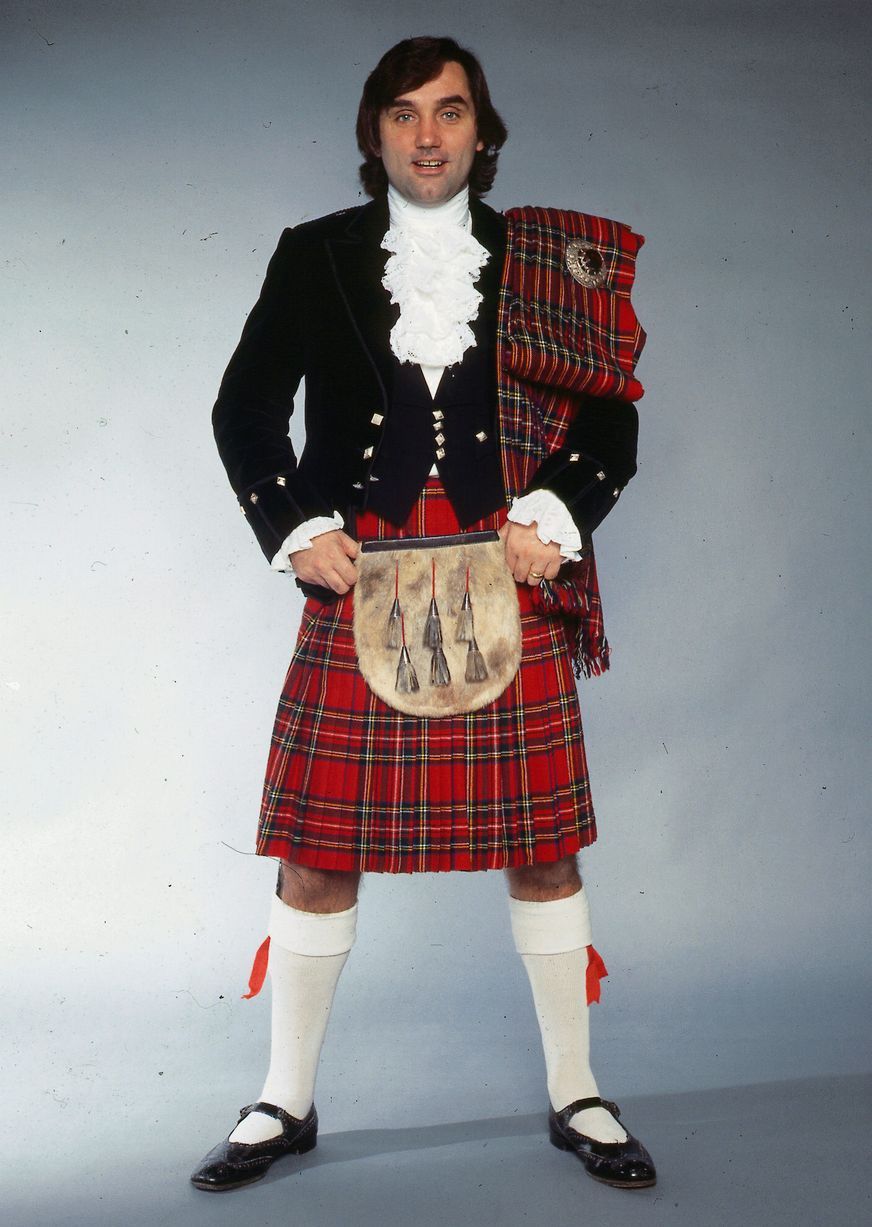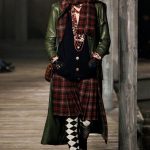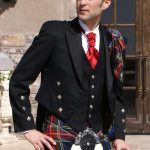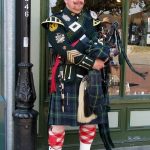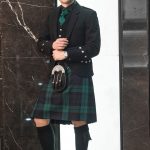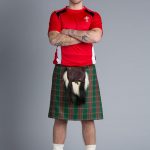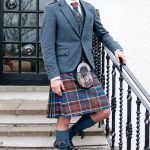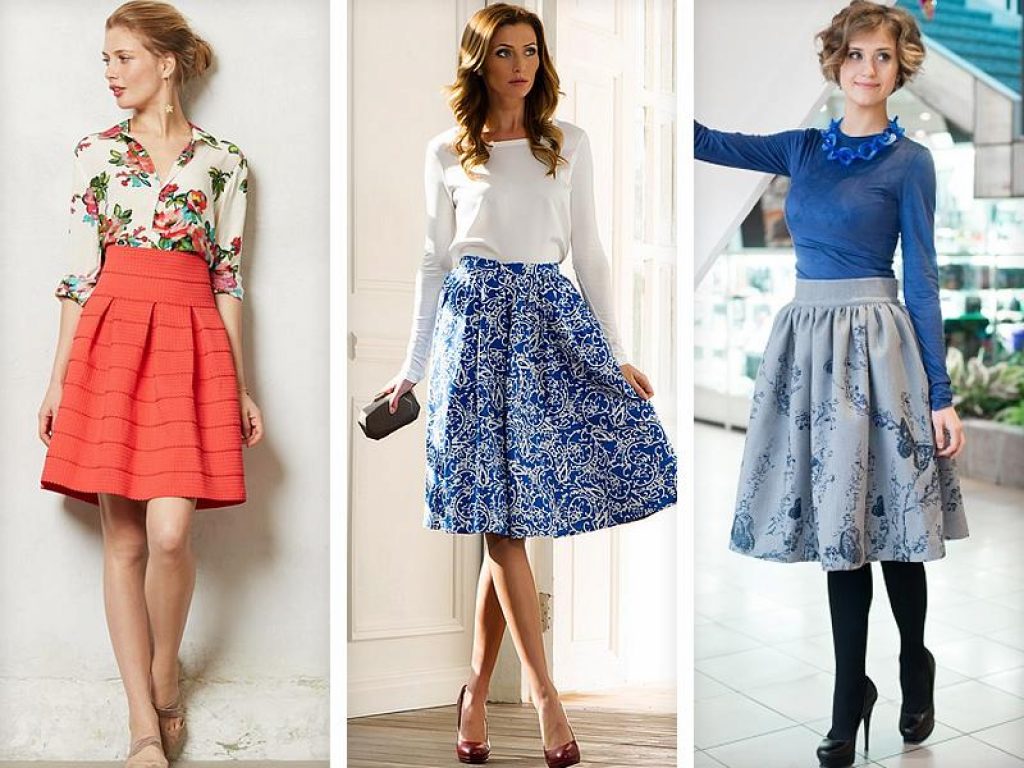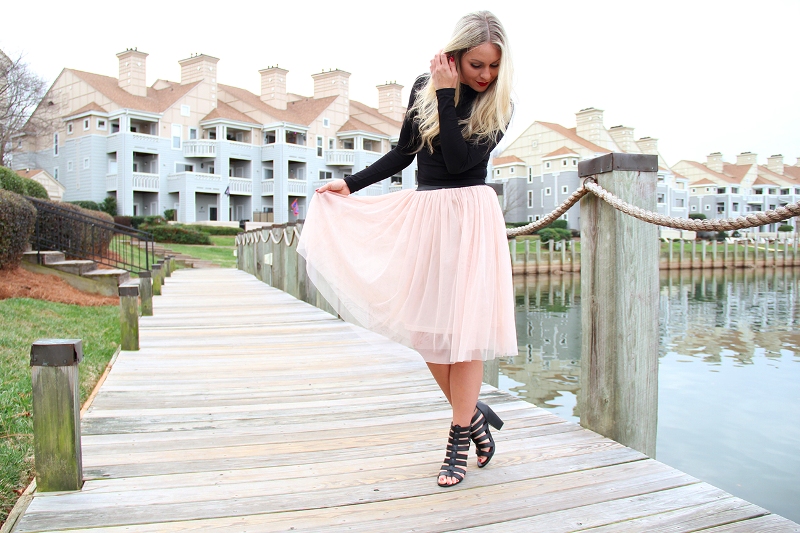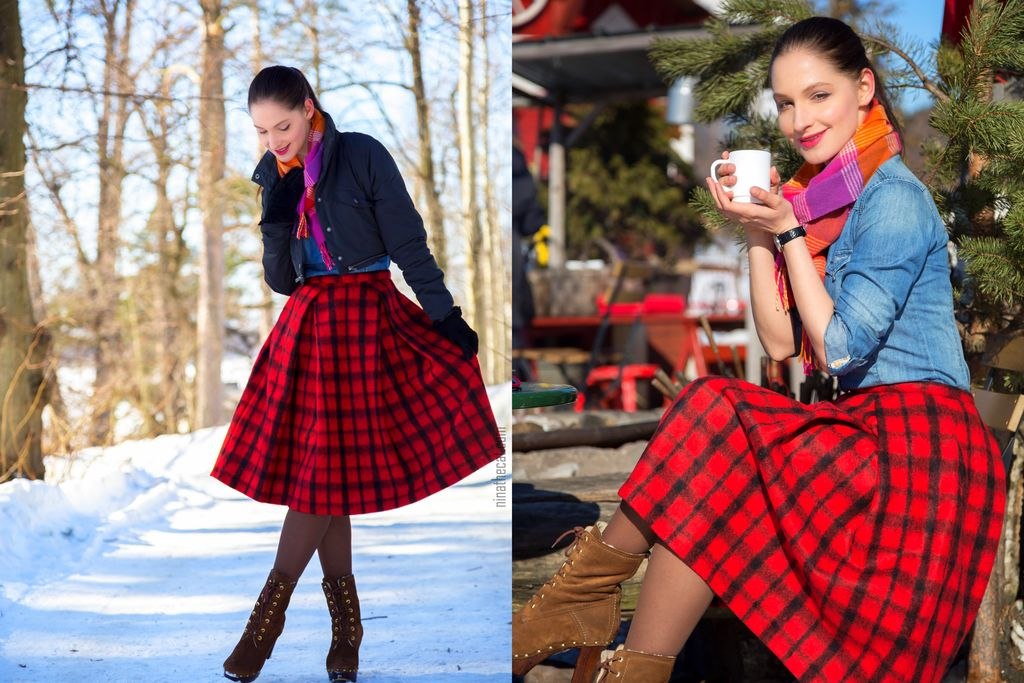The national costume of the Highlander in Scotland contains an unusual element - a plaid wool skirt. The name of such a wardrobe item is a kilt. The product is knee-length, gathered in large longitudinal folds at the back. The classic Scottish skirt owes its history to an ordinary plaid. For some time, the kilt was banned by the government, today it is an integral part of the national costume.
The history of the kilt
The term "kilt" is translated from Old Norse as "folded". The history of this original Scots skirt goes back to the 16th century. Men of the Highlands of Scotland, trying to keep warm during the night, wrapped their bodies in a piece of checkered woolen fabric. In this case, the upper part lay on the shoulders, and the lower part was wrapped around the waist and secured with a belt. This forced outfit was called a "big kilt", although in fact it was an ordinary woolen blanket in a check. It saved a man from the cold, when wet it quickly dried right on the body, did not interfere with movement. If necessary, for example, during military operations, the kilt was easily thrown off the body.
There was someone who fixed this element of clothing in the everyday life of the Scots. This was Thomas Rawlinson, an entrepreneur who, having shortened the kilt a little, made it a uniform for his workers. At the same time, it became known as a "small kilt" and, when worn on the body, did not touch the ground.
The tartan skirt was not to the taste of the English king. It was banned for 40 years. Only after 1822 did the kilt become a national element of clothing. It is worn in Ireland, Cumbria, the Isle of Man, and Scotland.
From the first days of its existence, the kilt was made of natural wool (the second name is tartan). The inhabitants of the highlands of Scotland dyed it in different colors. For this, they used berries, leaves, and other natural dyes. Depending on the clan to which a man belonged, the color of his skirt had its own characteristics. Therefore, from afar, one could immediately recognize when a "stranger" entered the territory.
There were differences in color and social status. The servants' kilts were one-color, with a simple, unpretentious pattern. Two colors were included in the fabric of rural residents. Men of military status had the right to three-color kilts, and poets could add up to six colors to their thing. The clan chief's skirt was distinguished. He received it from his father. The kilt's pattern had seven colors, reflecting all the attributes of the clan.
Kilts have not been ignored by fashion catwalks either. Jean-Paul Gaultier was the first fashion designer to include a skirt in a men's wardrobe. Levi's continued the initiative, designers worked hard to introduce the kilt into their denim collection.
Tartan fabric today has about 500 color combinations. And yet, the combinations invented by Scottish clans are considered classic:
- red and black;
- black, white and grey;
- blue and purple.
Today, a tartan skirt is a unisex item. It is made from fabric 70 cm wide and 2 to 7 m long.
Varieties
Having figured out why the Scots wear kilts, you can understand how important this item of clothing is to them. Today, it is not a mandatory part of the wardrobe, but for a formal, festive or wedding suit, many choose it. A large kilt is more than 5 meters of fabric, wrapped not only around the lower part of the body, but also covering the shoulders and back. One half of the kilt is gathered in folds and fastened at the back with a belt. The second part is located on the left shoulder and serves as a cloak.
A large kilt is a rather bulky "construction" of fabric, which is still useful to the inhabitants of the Highlands of Scotland. But for ordinary men's wardrobes it is rare. More often you can see a small kilt on Scots. To sew it, you will need 5 m of fabric, on which pleating is done in the middle. After laying the folds at the back, the length of the material should be one and a half lengths of the waist circumference.
What fabrics and patterns are used?
To sew a Scottish skirt for men, you will need tartan - a multi-colored checked fabric made of wool, the coloring of which symbolizes belonging to a certain clan. So, if the pattern of a Scottish skirt includes red, white, green and black colors, this is the sign of Caledonia. Such a kilt can be worn by any resident of Scotland. Black, green and blue - "Black Watch" - a tartan of military origin, typical for the clans "Gordon" and "Campbell". White, green, black, blue - "Dress Campbell". Beige, white, black, red - "Burberry". Red, black, white, yellow - "Royal Stewart".
At the beginning of the 19th century, many tartan combinations were lost. That is why a movement to restore them (using old books and chronicles) was born. In 1822, for the arrival of King George IV, on the initiative of Walter Scott, a call was made: everyone should wear their own tartan. It was then that the world saw bright and expressive combinations of various ornaments. Many of them appeared at the event for the first time. Today, the Register of Scotland does not prohibit the appearance of new tartan colors.
It is popular among the Scots to create their own tartans based on already known ones, including ancient samples. A striking example is Modern, which arose on the basis of Ancient. The modern version uses the same colors, but in a brighter, more saturated version.
How to wear it correctly
Despite the many varieties of kilts, this wardrobe item must meet a number of mandatory requirements. The back must be gathered and ironed with folds, the two outer (on the sides of the pleated element) halves must be of symmetrical size. They are connected in the front with a wrap, on the side of which there are decorative fasteners. The presence of a yoke in the model is acceptable. The skirt must be gathered at the waist, over which a belt of the selected width is worn.
The Scottish kilt goes well with accessories such as:
- sporran (a small shoulder bag);
- kiltpin (special pin for kilt);
- brooch in the style of Scottish costumes.
One of the obligatory additions to the kilt are high knee socks (hosses), which have special ties at the top. They are worn under brogues or leather boots.
The Scotsman wears a classic kilt with a dark waistcoat. For the cold season, a jacket of a muted tone will do. Young people are not so categorical. Kilts are completed with sweatshirts, jumpers, pullovers, mainly in dark shades. A regular men's shirt is allowed, including white.
Use in modern fashion
The men's skirt has long ceased to be an accessory only to the Scottish national costume. This bright, eye-catching element is also used in women's wardrobes. If the set of colors in it is not too flashy, the image turns out to be gentle and romantic.Stylists often complement the extravagance of the cage with natural fur (on a bag, shoes, beret, belt). It's colorful and stylish.
The small kilt can be seen on men during holidays. It is also a mandatory element of clothing in the British army (and a number of other countries of the British Commonwealth). Such famous people as Alexander McQueen, Sean Connery, Prince Charles, Jared Leto, Ewan McGregor honor national traditions and appear in public in kilts. Vin Diesel, Mel Gibson, Kyle MacLachlan and others wore them to create appropriate stage images. Gerard Butler came to the premiere of the film in which he starred in a kilt.
New York fashion trendsetters even held an unusual show called Dressed To Kilt. It featured Kyle MacLachlan, American speed skater Shani Davis, Alan Cumming, Sam Waterson, and Marcus Schenkenberg.
When considering why men in Scotland wear skirts, it is impossible not to envy their patriotism and respect for ancient traditions. The Scottish kilt, invented more than two centuries ago, is not just an original piece of clothing, it is a symbol of the nation and its history.
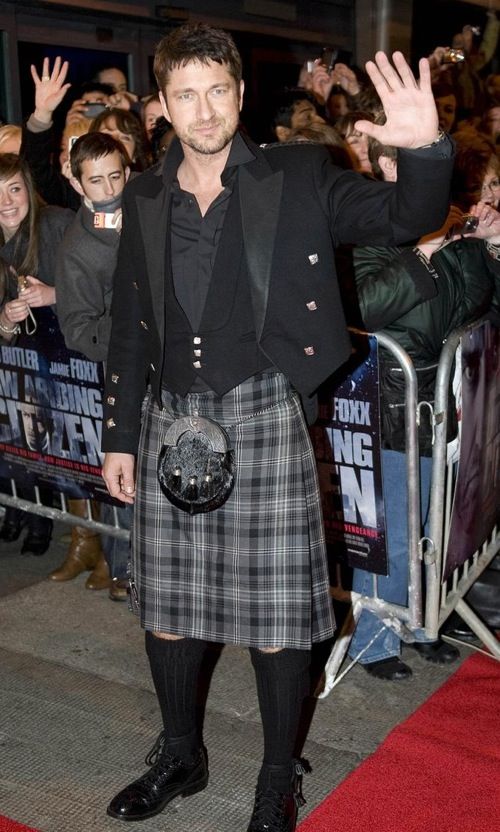
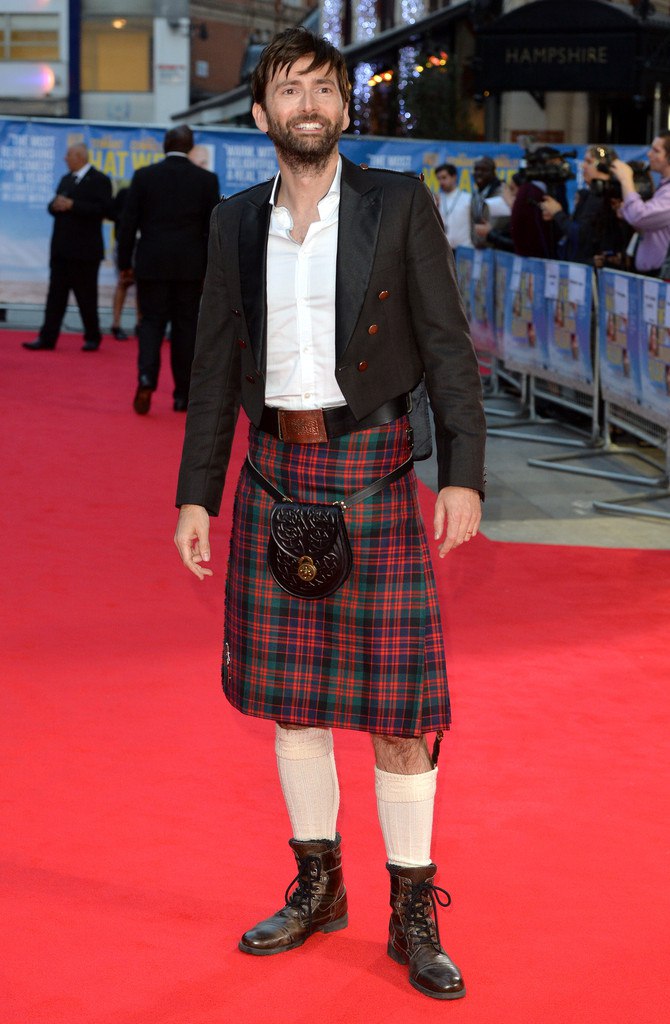


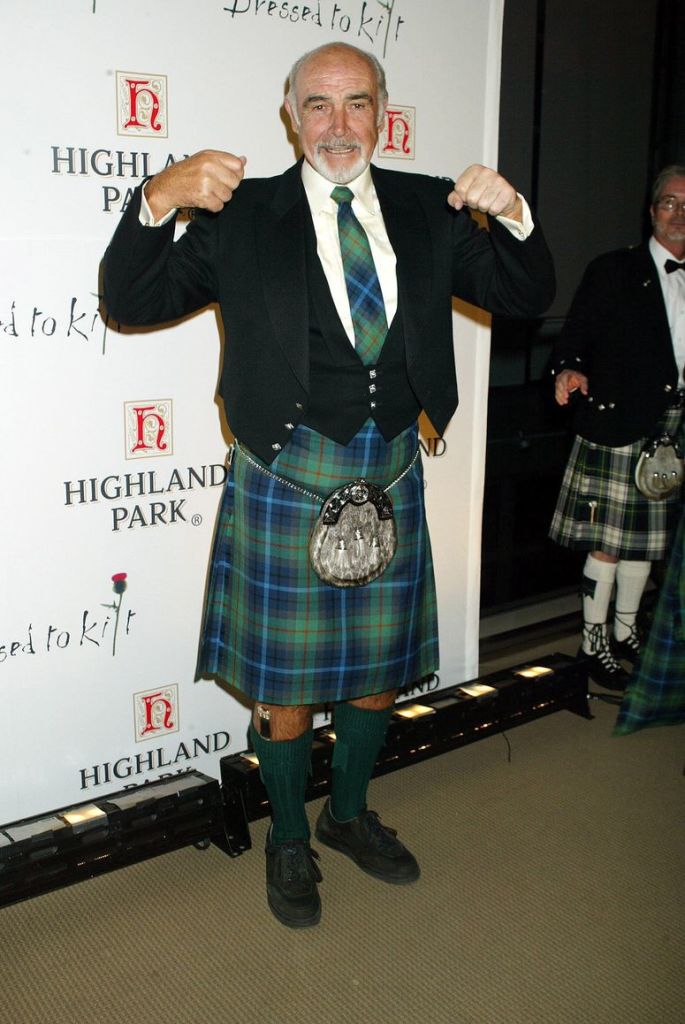
Video
Photo

